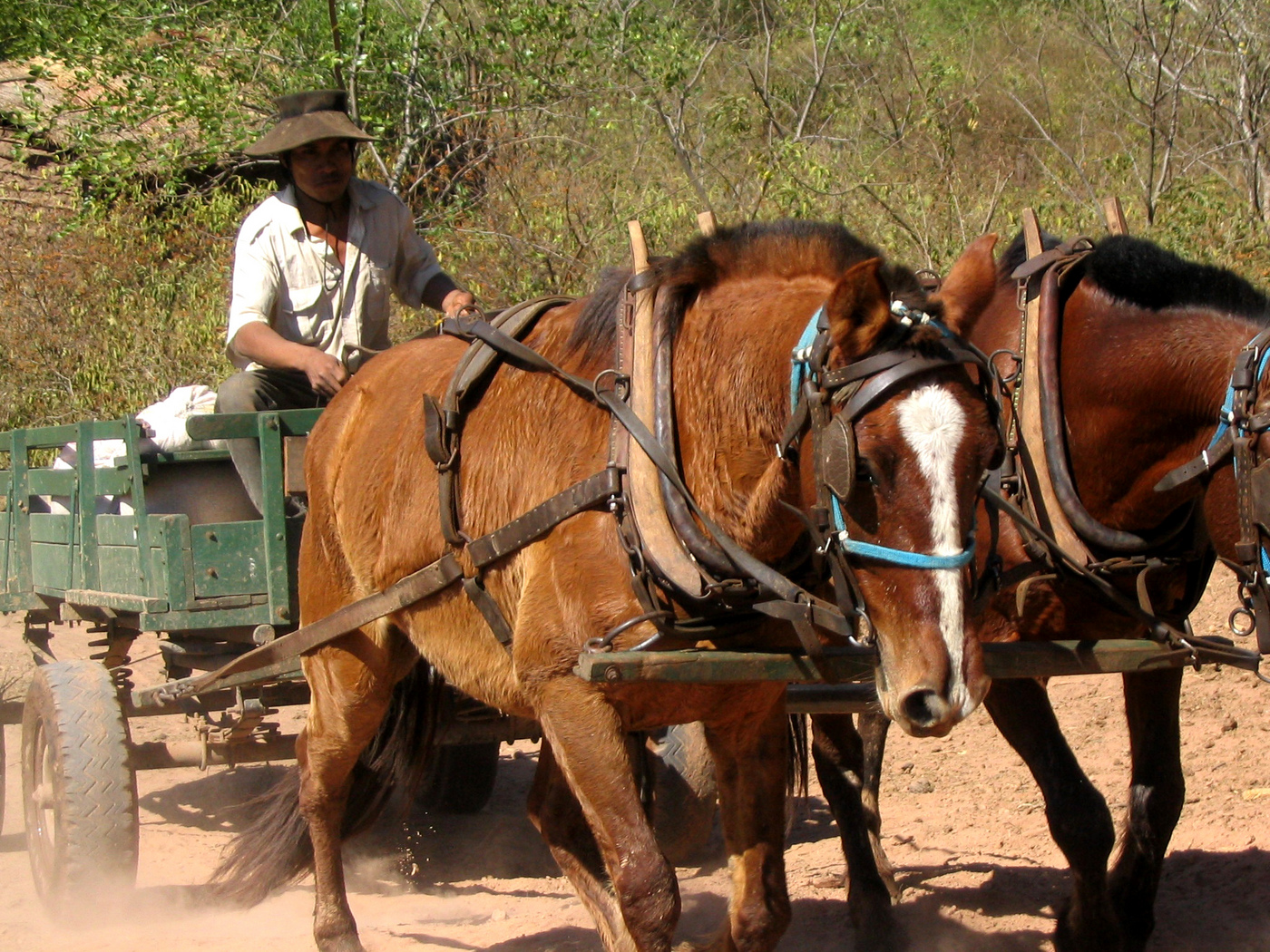
|
source: imi0568.jpg, 2048x1536 1.1mb a030850.html (file 78 / 190), 25 April 2005 |
The carroza backward | thumbnails | forward | text |
Working with horses is expensive. The horses themselves are expensive, caring for them is expensive, and the equipment is expensive. Oxen, to take a counter-example, are not only cheaper to buy, but can usually be sold for profit after a few years of work. Oxen require less maintenence, and ox equipment is traditionally made at home, practically for free.
The chief advantage of horses is that under ideal conditions they can work faster than humans or oxen. Speed is important when lots land is involved: in the Cañón del Ingre horses might start making a difference on ten hectares or more. None of my neighbors cultivate more than five, however, and most work one or two. Even shared community production in Imi (our initial focus) falls shy. From a different angle, in order to afford the horses, their upkeep, and the equipment, Imeños would have to cultivate more land and (in particular) sell a lot more produce: horses would actually mean more work, not less. In some cultures, increased production would implicitly justify horse traction; for my neighbors, it would have to be the other way around.
For some people, producing more, selling more, and earning more, is exactly the point. In Ingre, the typical Guaraní farmer isn't interested. Generally speaking, he wants to produce enough to keep his family comfortable and well-fed; he'd rather spend time with his wife and kids than making extra money. (I'm talking about guys. Women are more acquisitive than their husbands, but they're usually busier.)